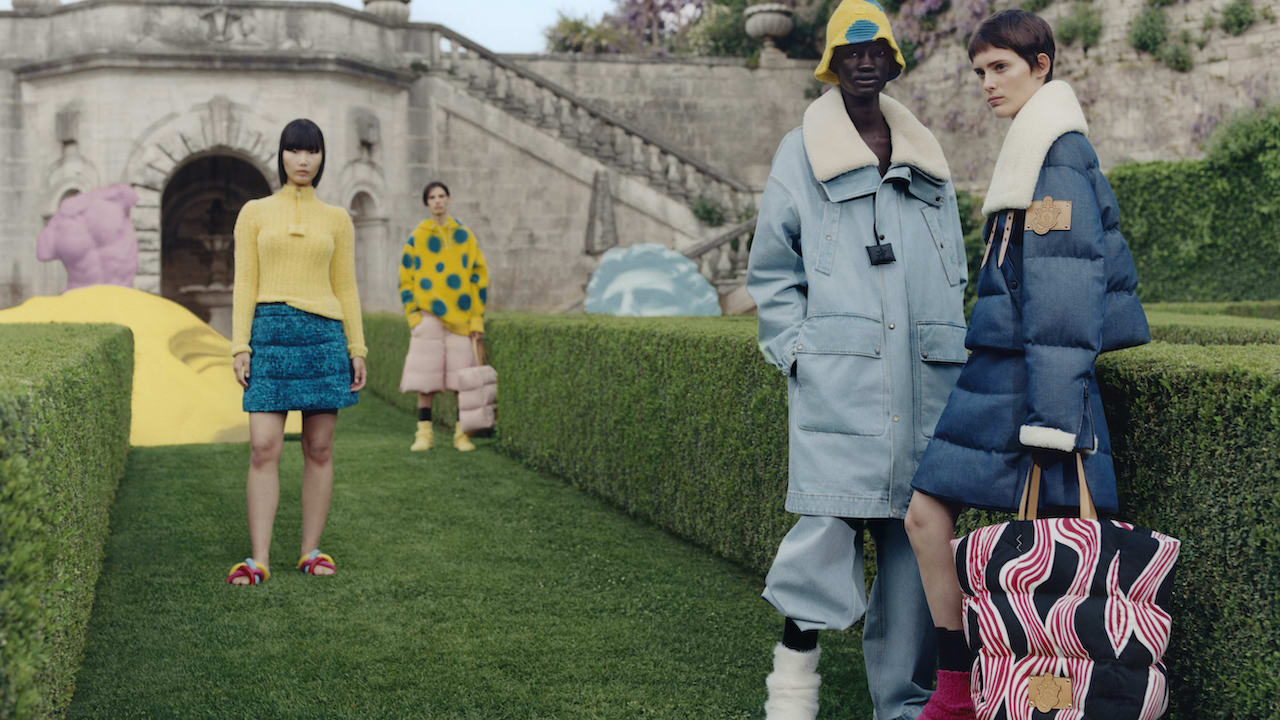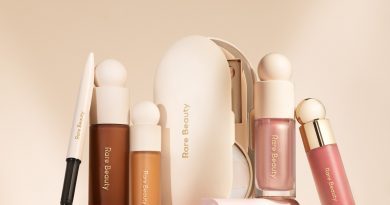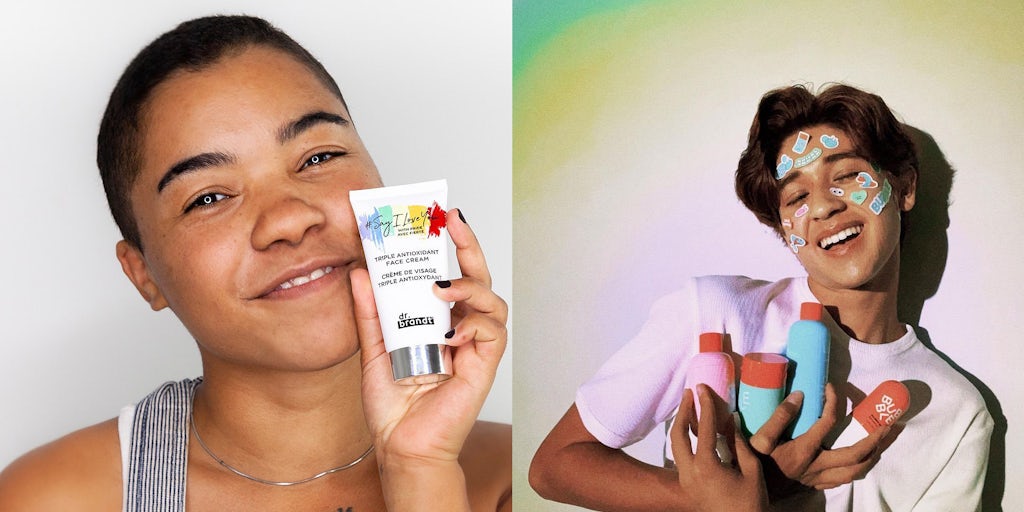Fashion Briefing: The new luxury customer acquisition playbook
The new luxury customer acquisition playbook
Chanel isn’t the only brand wooing the 1%.
At Glossy’s Fashion & Luxury Summit this week, brand and retailer executives taking part in town-hall, working-group and fireside-chat discussions were keen to compare notes on courting ultra-high-spend customers. How to gain this customer’s awareness, cater to their habits and win their loyalty were among the event’s hottest topics.
Whether or not luxury is recession-proof is up for debate, but what’s certain is that the market has fared exceptionally well during the economic stability of the last two-and-a-half years.
Gaining customer awareness
Due to new privacy-related roadblocks, effectively marketing to consumers has become more challenging for companies across sectors. But, arguably, few marketers are forced to work with a toolkit as limited as those in high luxury.
During a summit town hall focused on challenges, attendees offered up effective solutions for a marketer in a niche luxury area who said her company’s looking to reach new, younger consumers.
“We spend so much time, money and effort on social media, retargeting ads and all this digital advertising, and we’re not sure if that’s giving us any ROI,” she said. “We [seem to] get nothing from Instagram and TikTok.”
However, she noted that, comparably, “Pinterest has a high-income audience.” Influencer marketing has also proven ineffective, she said.
Her company’s core customers are men starting at 60-years-old, and many either haven’t provided the company with an email address or don’t open emails, she said. That they’re of an older generation is part of that, but also, luxury customers prioritize discretion. One attendee said her company has sold $70,000 furs to customers who’ve opted to pick up the product versus provide any contact information. Another proposed marketing an implemented pen-and-paper-style clienteling system to win shoppers.
What’s worked to acquire the company’s older customers are IRL events and sponsorships. Most business comes from returning customers and those coming to the brand through referrals and “industry-centric” partner companies, the attendee said. Sharing first-party data with those partners is a company focus.
Heather Kaminetsky, president of Mytheresa in North America, said referrals are also a focus for her company: “Our top clients’ friends should be our customer, so we’re creating moments that enable that,” she said.
One attendee recommended that luxury brands team with a fellow luxury brand in a category such as caviar. Another attendee proposed partnering with Neiman Marcus or a high-end jewelry brand, as they may willingly offer up their top clients to a sponsor promising them a memorable experience. American Express was also mentioned as a good potential partner, due to its owned data. “They know where these people are spending their money,” the attendee said.
Targeting customers’ personal assistants and also family offices were among other recommendations.
Of course, simply selling alongside brands that customers are already shopping would also work to boost awareness.
“Even the 1% is shopping on Amazon,” said an attendee. “People use it just to read reviews. Sixty percent of their traffic never purchases on Amazon, and that increases to 80% for people [browsing] on Amazon Luxury [stores].”
But according to some executives on site, luxury brands that opt to sell on Amazon will never get picked up by the Neiman Marcuses of the world. Maria Buccellati, president of fashion brand Faith Connexion, disagreed. “When Farfetch first came [to market], retailers would tell me, ‘You’re selling on Farfetch? We’re not going to work with you.’ Now, every [luxury] brand is on Farfetch, and it’s our best partner.”
On the physical retail front, providing a touchpoint where shoppers can see a product in person often helps seal the deal, when it comes to high-cost purchases, the executives said. Stores can leverage technology and associates to provide much information on products, which luxury customers value.
On that note, Christie’s has prioritized consistently providing its high-spend consumers ample information via its blog, for example, said Neda Whitney, head of marketing at Christie’s. “That’s where we’re much more conservative with our narratives and [feature] the scholarly and didactic content our clients are looking for. Someone who’s going to pony up a couple million [dollars] for a painting wants to know the ins and outs of its background.”
Such extensive content marketing is crucial in the luxury space, attendees said.
“Acquiring a customer can be incredibly expensive and unprofitable because brands too often focus on [content] breadth instead of depth,” said Katharine McKee, founder of digital commerce-focused Morphology Consulting. ”If you think outside of tips and tricks and instead [focus your content on] who you are, what your brand does, what problem it solves and who you reach, you’ll efficiently achieve a high domain authority score and organic [search] rank.”
She added, “You shouldn’t be bidding more than $1 on anything, ever. If your CAC-to-LTV is a really bad ratio, then the customers you’re acquiring are not long-term customers. Your CAC for your real customer is going to be low, and their long-term value is going to be incredibly high.”
To avoid being “really aggressively punished” by Google, McKee recommended brands avoid “conquesting” and “keyword stuffing” by including information on the brand website that is not “100% pertainable” to the brand. Lilian Raji, president of luxury-focused Lilian Raji Agency, said content driven by questions the brand receives on chatbots or social media works well.
Leading with content has proven effective for Saatva, which sells $1,250 mattresses.
“When you’re shopping for a mattress, you’re going to discover us through our content,” said Shari Ajayi, senior PR manager at Saatva. “We share information on our [products] being chiropractor-approved, made-to-order and made in the USA. Our brand is for the consumer who wants to do their research.”
Among other luxury customer acquisition strategies, Raji stressed the importance of PR and securing coverage of the brand in “reputable” publications that serve to provide “validation and trust.”
“It’s not so much about sales, but it’s about brand image,” she said. Plus, publications often work to “make the brand relevant in a way that people [in-house] at a brand don’t always see.”
Finally, she said, targeting customers beyond high-spend shoppers can also be worth it. For her part, she’s been trained to open all of Hermès’ emails because they once featured “cute cartoons” that she liked. “I still follow the brand because maybe, one day, I’ll have $40,000 in pocket change,” she said.
Catering to customer habits
Contrary to the belief of some luxury leaders, the luxury consumer is indeed shopping online. Brands should also note that this consumer is unwilling to compromise, according to industry insiders.
“I struggle with Chanel’s hard line in the sand against digital, because it’s an archaic mindset,” said Whitney. “At Christie’s, most of the things we sell are [priced] in the millions, and 81% of our clients bid digitally. A Chanel purse is not a one-of-a-kind artifact; everyone knows what it looks like. It’s really odd that [Chanel isn’t] catering to the needs of the consumer.”
As Raji put it, “You can’t cater to the 1% at the expense of alienating new, younger customers. Otherwise, where are you going to be in the next 20 years?”
According to Whitney, today, the same person who gets a hard copy of The New York Times also swipes on Tinder and gets in an Uber.
“We’re not analog or digital; we’re everything,” she said. “Brands that succeed are those that listen to the changing and evolving consumer, not the ones that make decisions in a vacuum. Those that segment their users in an [old] black-and-white way are just leaving money on the table.”
Ajayi said that, if they want an item, luxury consumers will pay a high premium, assuming their research checks out. For example, the product’s reviews are positive, there’s nothing comparable to it on the market, and it’s competitive with products being used by their peers.
“There’s an element of, ‘I’m going to do this for myself,’ [when making the purchase],” she said.
According to McKee, “The luxury consumer wants exactly what they want. And they’re discerning enough that they’ll wait until they find [a version] that checks every box on their list.”
Winning customer loyalty
There are high-spend customers, but then there are those customers who spend the most. Efforts to treat the latter group are rarely discussed by brands publicly, particularly because the included customers value discretion.
“For the 1%, you have to do something special,” Raji said. “They’re spending so much money, and they require that; they expect to be treated in a special way.”
Rather than group dinners, which are commonly hosted by luxury companies for valued shoppers, “the actual 1% wants [a perk] that’s quiet.” McKee said. For example, she mentioned an instance where a brand brought a pop-up shop to a shoppers’ house. The sizes and preferences were catered to the shopper and her two invited friends, and food and refreshments were provided.
“We do things for our top clients that we don’t publicize,” said Kaminetsky. “It’s not about a loyalty program or cash back; it’s about facilitating luxury experiences that money can’t buy.”
For example, earlier this year, Mytheresa invited 50 top New York clients to see a rehearsal of a New York City Ballet performance, followed by a cocktail party and a Q&A session with the ballerinas.
“We didn’t sell anything that night; it wasn’t about that,” she said. “And there are tons of things we’re doing like that, which are critical to our success.”
Despite the lack of official marketing around them, such activations do pay off, said Ajayi. “That upper-echelon consumer is also your best brand advocate,” she said. “Most always, they’ll share their meaningful experiences and refer their friends.”
Chanel, however, has no qualms about calling attention to its private perks. “Did Chanel even need to announce it?” Ajayi said, regarding the brand’s recent, highly publicized move to launch exclusive stores for its top spenders.
‘2022 is not a year to be heroic’: Frederic Court on Felix Capital’s current approach to brand growth
Ahead of announcing Felix Capital’s new $600 million funding round, doubling its funds to $1.2 billion under management, founder and managing partner Frederic Court spoke with Glossy about the company’s missed opportunities, investment plans and prioritization of brand growth.
Felix Capital launched in 2015 with a focus on transforming the customer journey. Farfetch, Goop and Peloton are among brands in the company’s growing portfolio.
What’s the significance of this investment round for your company?
“It’s a big milestone. And obviously, it’s a large amount of money that comes with a lot of responsibility. What we’re doing is aligned with what we’ve done from the very beginning; we haven’t changed our mission. We now have 50 logos [representing our brand portfolio] on our website, and it’s important to our investors that we’re able to show good performance. What’s notable is that, along with capital coming from new investors, we have more capital than expected coming from existing investors. Now, for companies we [invest in], we’ll have more ability to [participate in their] later rounds. We were an early investor in Farfetch — at the time, with a small fund. There was [opportunity] to participate in later rounds, but we didn’t have the capital. So it’s been a learning [process]. Now, we’ll be well equipped — and, I hope, even more attractive to entrepreneurs.”
What does growth look like for your company?
“We’ve always liked to do things over time; we like to get to know people ahead of investing, and we’ve always expanded our team thoughtfully and slowly, which we’ll continue to do. In the period we’re entering, there will probably be a more thoughtful pace of investments; our way of practicing venture capital will be probably more in demand. We’re already seeing this start to happen.
On top of what we were doing before, including [focusing on] fintech and B2B companies, we plan to expand a bit into adjacent, related investment areas, including web3. We very much see the blockchain and web3 as a new platform for creativity for entrepreneurs. Also, increasingly, we’ve been [focused on] sustainability and tools for running more sustainable businesses. Brands that are putting this at the heart of what they’re doing are what people want.”
Are fashion and beauty still top of mind?
“There are two examples of brands we saw and didn’t get a chance to invest in for different reasons – both started in Europe and have been big successes: Charlotte Tilbury and Byredo. They’re amazing brands with very strong identities that started very small. There are very few of those, but they exist. As consumption changes and generations change, there will be more possibilities for beauty and fashion entrepreneurs to come up with new content. Arguably, we could and should have done more in resale where we’ve seen some great successes. Trends from clean beauty and Gen-Z beauty to web3-native fashion and sustainable fashion will all be very relevant, and we will have our eyes wide open for those opportunities.”
What’s your current take on profitability vs. growth?
“2022 is not a year to be heroic. It’s a year to refocus on the big goal, probably [eliminate] some of the growth. With growth, you can’t do everything right. So there will be some employees that people hired too quickly, maybe some new initiatives that need to be reassessed. And the balance between growth and profitability will change a bit. We have come companies in our portfolio that are growing very healthily, profitably — like Anine Bing, for instance, which is great. We also expect that this year is when we’ll see a rebalancing of channels. We see physical retail coming back strongly, because good retail is not dead. It’s in high demand. People want experiences and connections.”
Inside Our Coverage
Meet the top-20 fashion and beauty marketers, according to Glossy.
Are extreme fashion ambassadorships set to catch on?
Luxury brands weighed in on the effectiveness of retail partners, from Amazon to Farfetch to Verishop.





